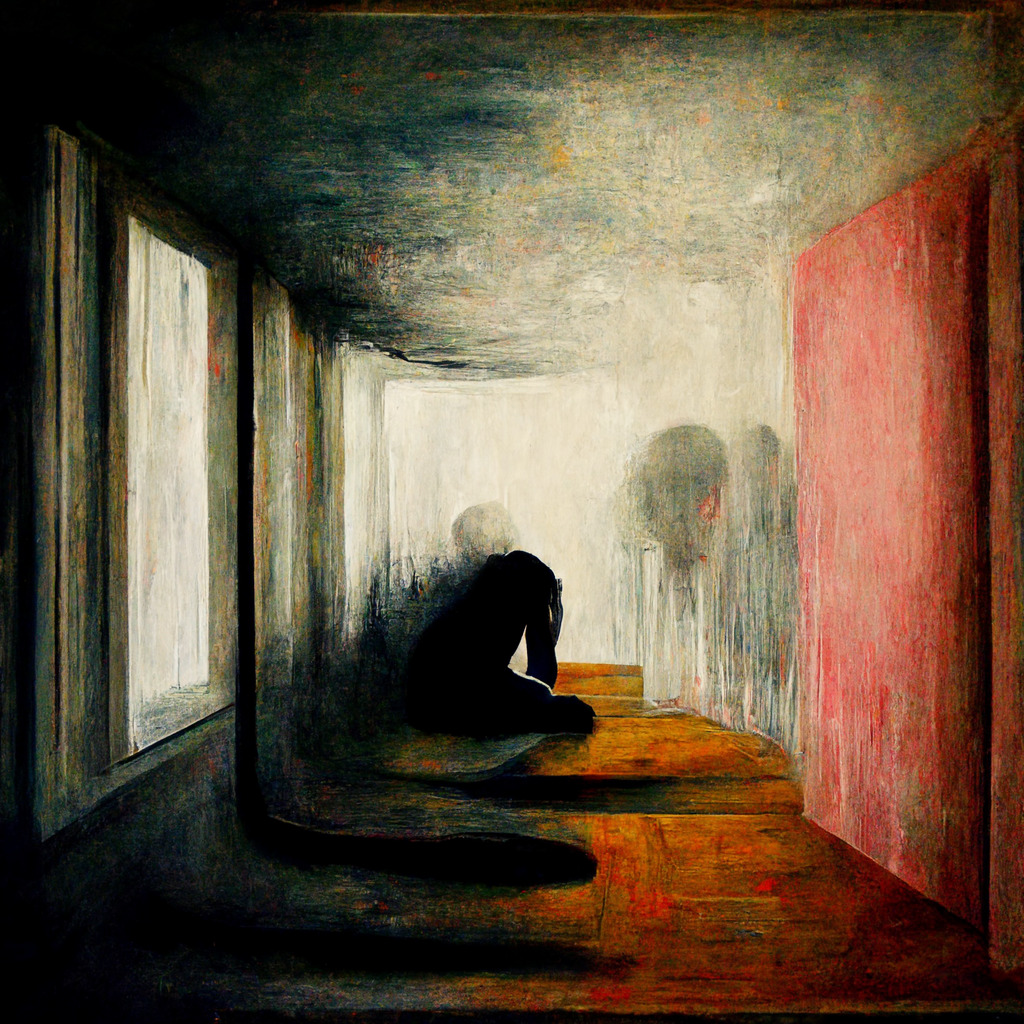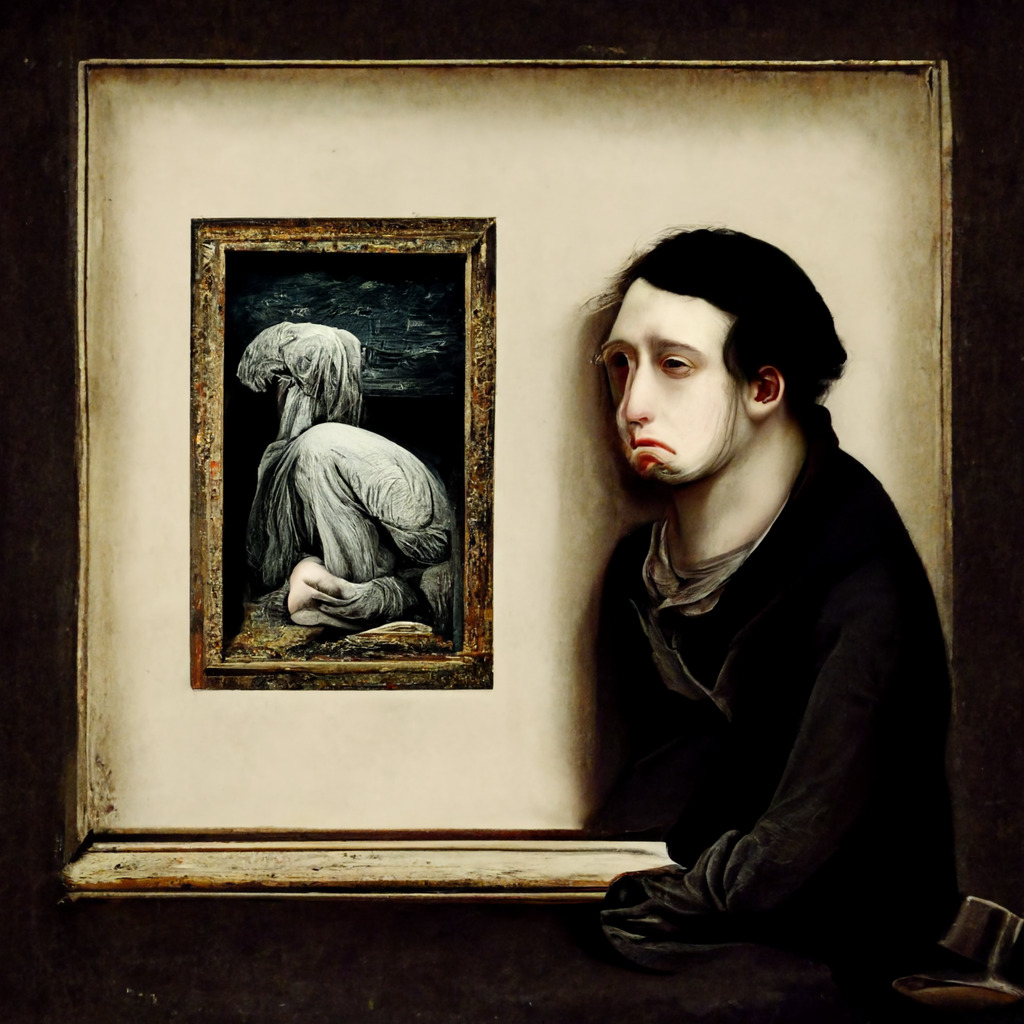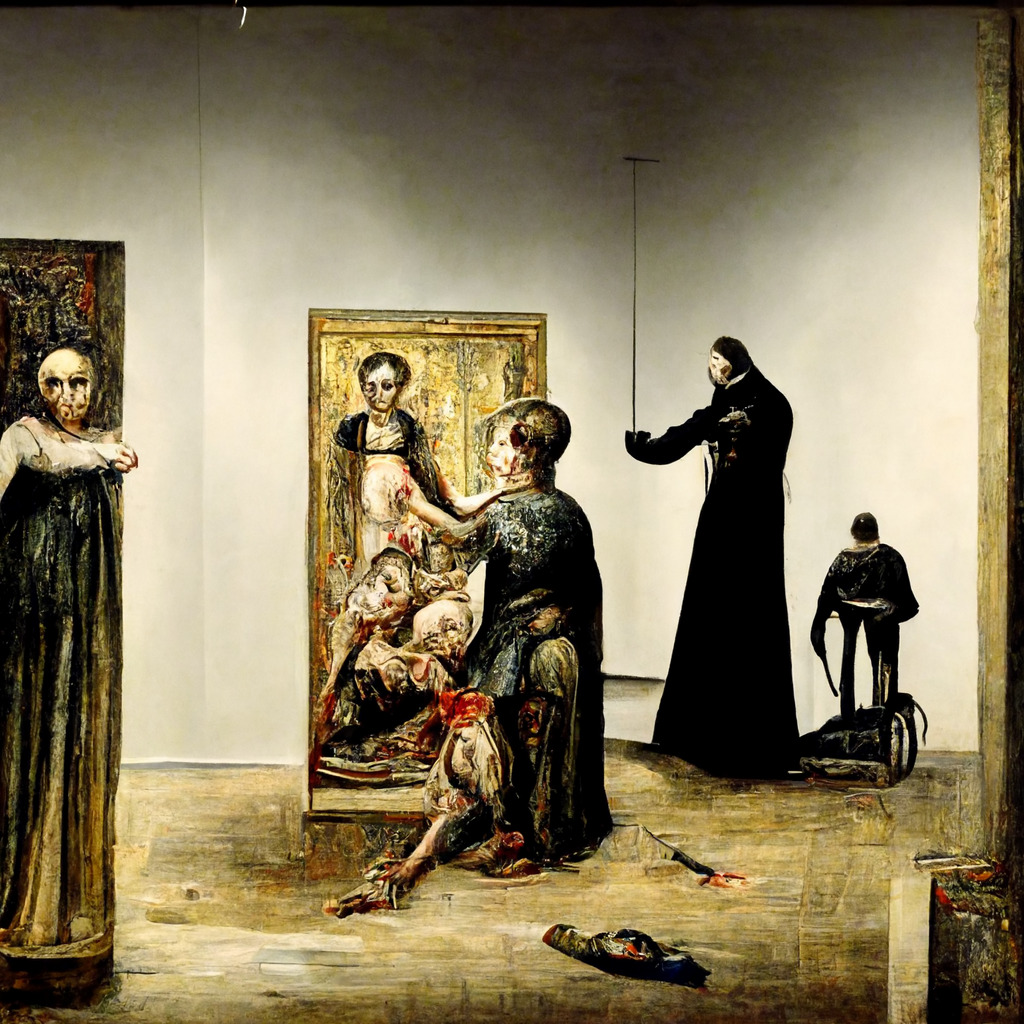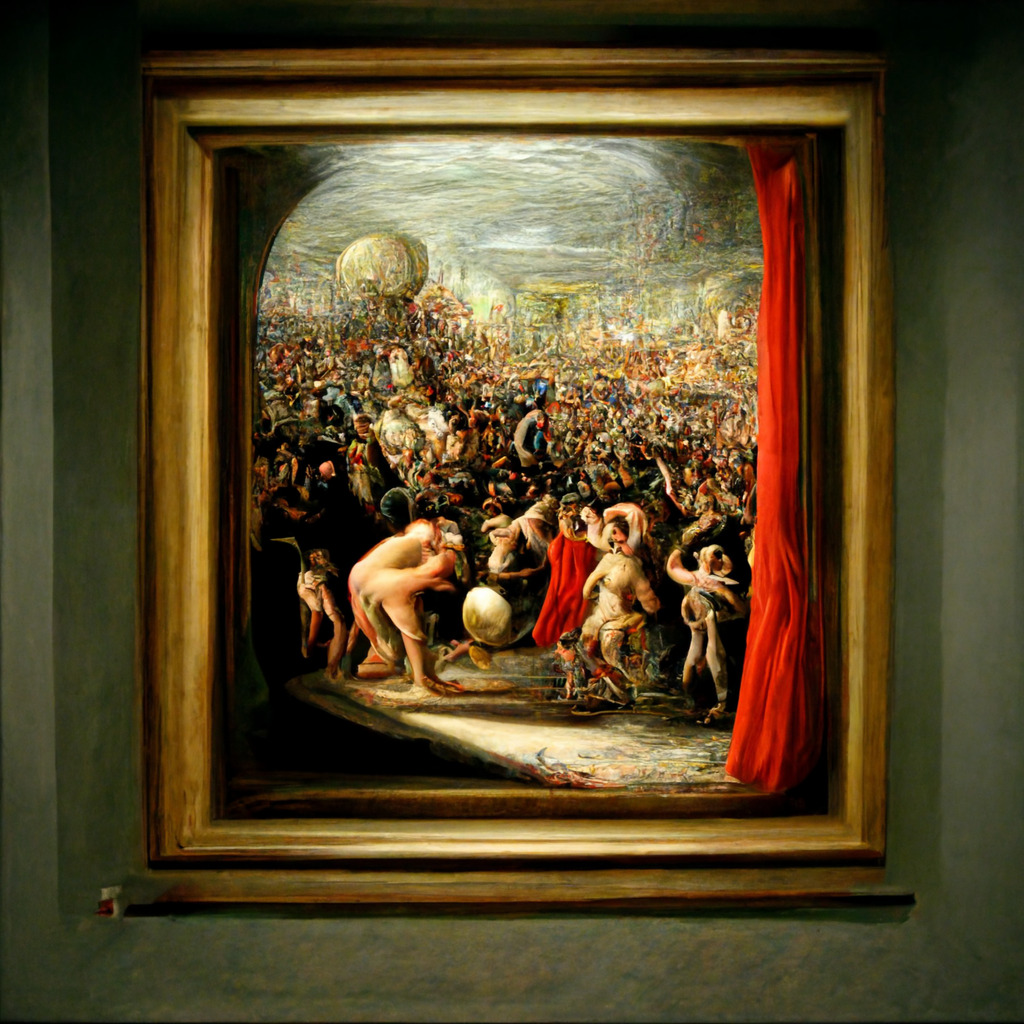Symptoms, disorders, and art history in Midjourney
My first explorations of how mental illness is expressed in Midjourney were drawn from my work in psychiatric genetics, so I precipitated prompts like “a gene for depression”. Prompts with “a gene for [X]” for “bipolar disorder”, “anxiety”, “schizophrenia” produced stereotyped images, indicating core biases in the training data and model, and did not give rise to any new thoughts or emotions (as one wishes art to do). As Midjourney is in beta, I won’t review this material yet.
I asked on the Midjourney Discord if there were any ethicists or artists working in this space, and a few users chimed in that they had been using prompts like “the personification of…” or “the abstraction of…” to see what Midjourney would produce. I tried the prompt “the abstraction of depression” which rendered:
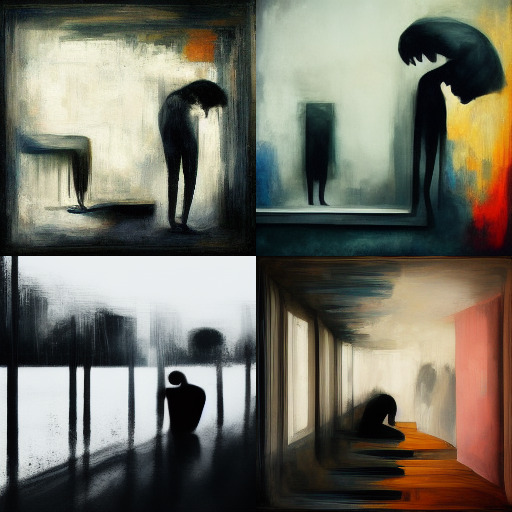
I was drawn to the fourth image and asked Midjourney to produce variations:
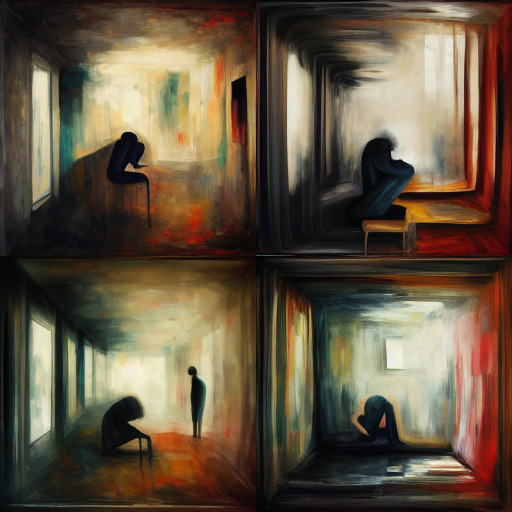
I didn’t like any of these as much as the original, so I went back and upscaled it:
The resulting image had a painterly look, perhaps from interpreting the “abstraction of” as “abstract art”, and had the feeling of a figure sitting in an art gallery or museum. This led me to prompt Midjourney to generate images inspired by the history of mental illness in art by appending the phrase “in the history of art”:

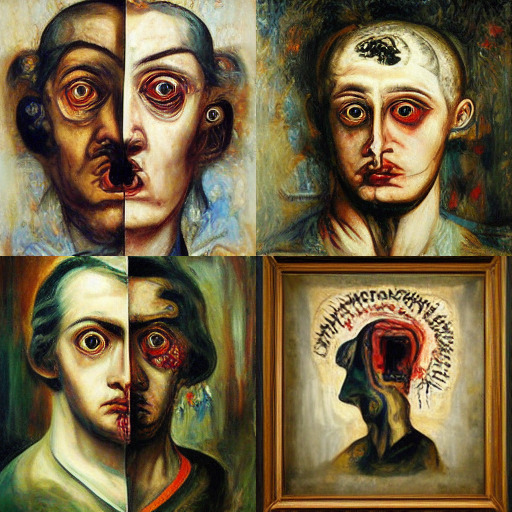
I was struck by how the prompt generated images of framed paintings hung in galleries. However, the use of terms for psychiatric diagnoses in the prompt lead back into the territory of the earlier “gene for…” experiments. Would rewriting prompts based on symptoms be constructive?:
In many of the images the the figures depicted are looking at art, making it, or becoming part of it. More of this series can be viewed in the History of Art gallery.
